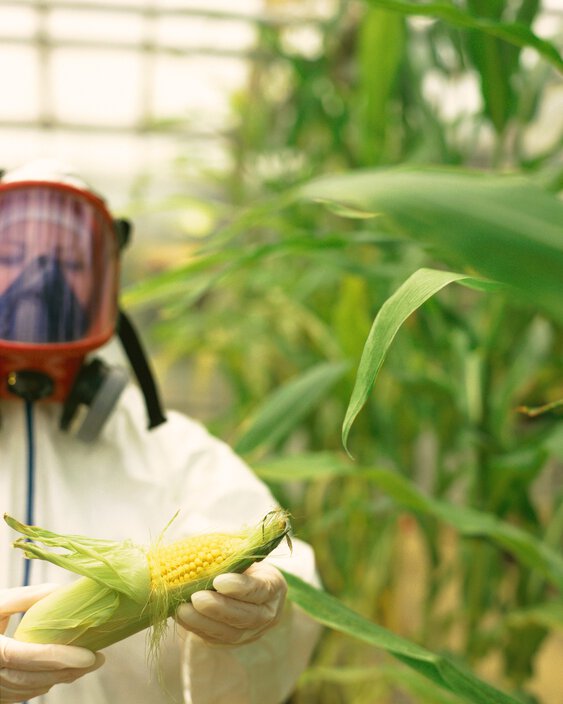
Genetically modified organisms (GMOs)
GMOs alter the genetic DNA with possible negative effects on the food chain.
Loading ...
Genetically modified organisms (GMOs) can be defined as organisms in which the genetic material (DNA) has been altered in a way that it does not occur naturally by mating or natural recombination. Genetic engineering is a generic term for the modification of genetic material. Its procedures are usually based on the findings of microbiological research and genetics and enable targeted interventions in the genetic material of humans, living organisms and viral genomes.
Genetic engineering
The genetic modification of organisms or genetic engineering can be divided into the following four main categories:
- Green genetic engineering (or agro-genetic engineering):
Aims to develop genetically modified plants in agriculture or the food sector - Red/Yellow genetic engineering:
Utilised in medicine, diagnostics (genetic tests) and gene therapy as well as the development and production of drugs (insulin, vaccines) - Grey/White genetic engineering:
This is the production of enzymes or fine chemicals for industrial use with the aid of genetically modified micro-organisms (e.g. development of products for enhanced washing performance) - Genetically modified animals:
Utilised for specific food production (e.g. dairy cows modified to produce allergy-free milk)
Claims scenarios
Overall, concerns have been raised about possible environmental or health impacts, ethical issues and insufficient regulatory control of the new technologies. One of the main difficulties in relation to risks emanating from the use of GMOs is to establish a clear causal link. There also appears to be no clear legal definition so far as to what constitutes a genetic engineering claim. In the absence of an unambiguous legal definition one could think of the following claims scenarios:
- Toxins and poisons: Genetically engineered products may have the potential to be toxic and a threat to human health
- Food allergies: Imported genes spliced into food could induce potentially fatal allergies due to novel proteins
- Contamination of non-genetically engineered products with genetically engineered products (horizontal or collateral gene transfer) or of end products with by-products of GMO-based processes
- Antibiotic resistance: When gene engineers splice a foreign gene into a plant or microbe, they often link it to another gene, called an antibiotic resistance marker gene (ARM); these ARM genes might unexpectedly recombine with disease-causing bacteria or microbes in the environment or in the guts of animals or humans and cause antibiotic resistance
- Agriculture: As transgenic traits tend to be unstable, they could break down and revert to flower development, spreading transgenes to native trees, or creating pollen that poisons bees and other pollinators as well as causing potential harm to human beings
- Environmental damage: Biodiversity may be endangered; there may be an intentional or incidental spread of modified genes into native populations, thereby disrupting natural ecosystems
- Creation of "superweeds" and "superpests": This would be the genetic engineering of crops to be herbicide-resistant or to produce their own pesticide; common plant pests such as cotton boll worm living under constant pressure from genetically engineered crops can evolve into "superpests" completely immune to pesticides such as BT-sprays and other environmentally sustainable biopesticides
- Creation of new viruses and bacteria: Genetically-altering plants to resist viruses can cause viruses to mutate into new, more virulent forms